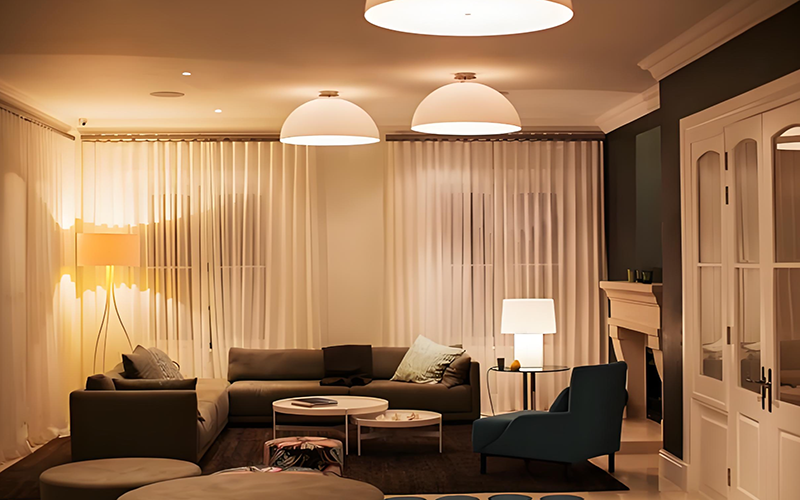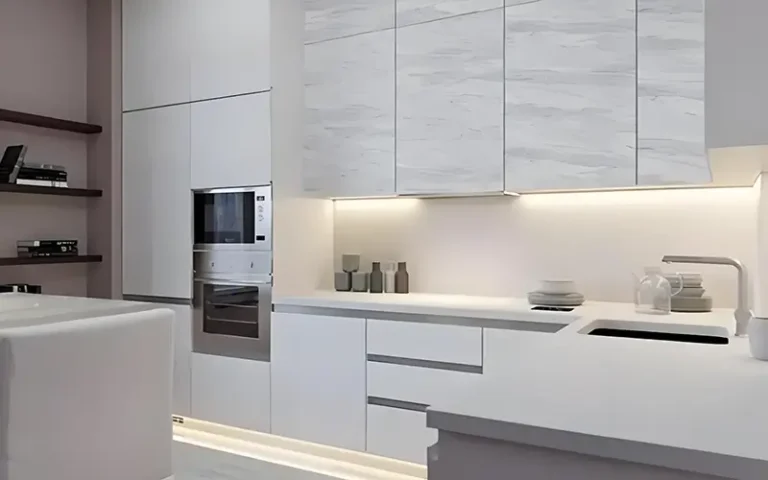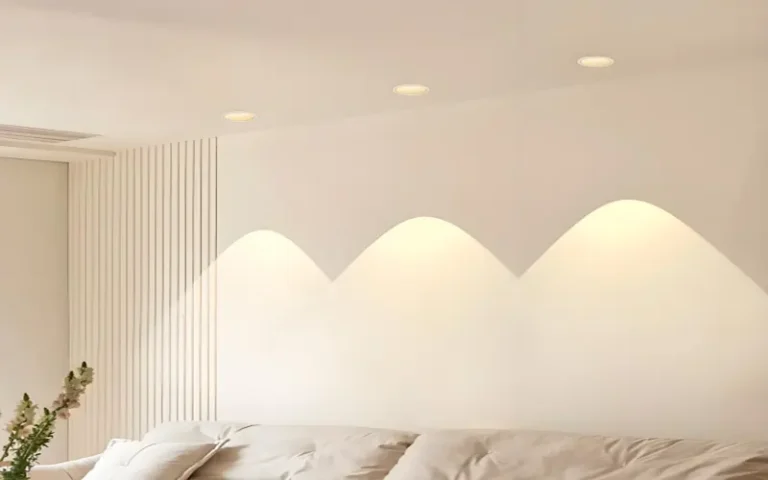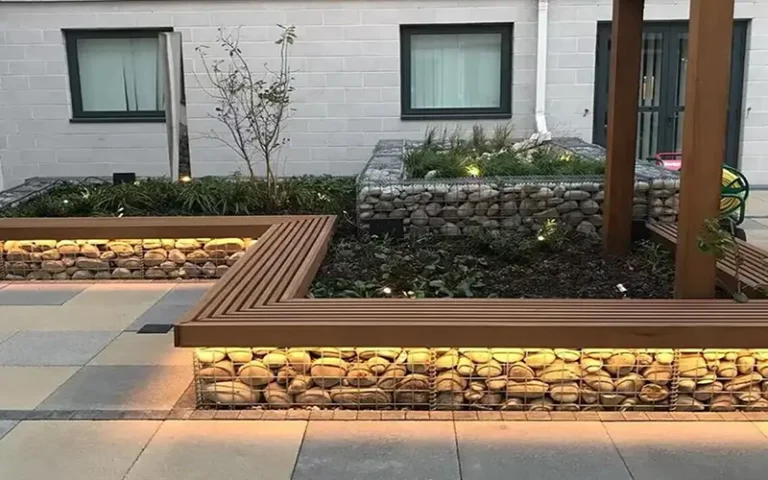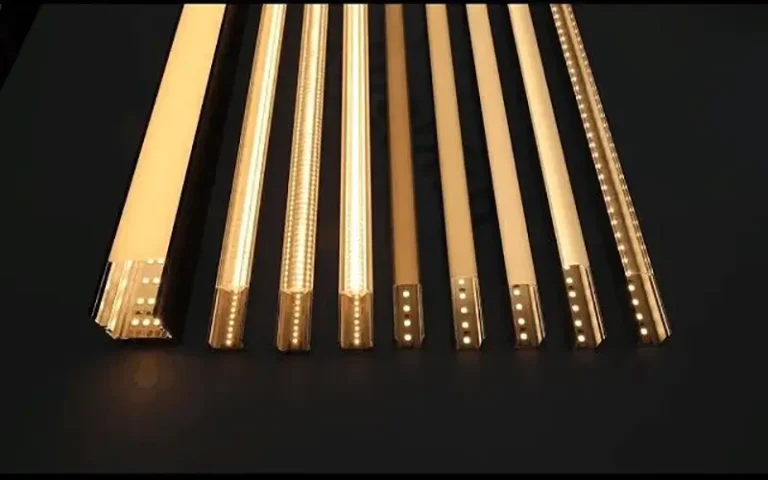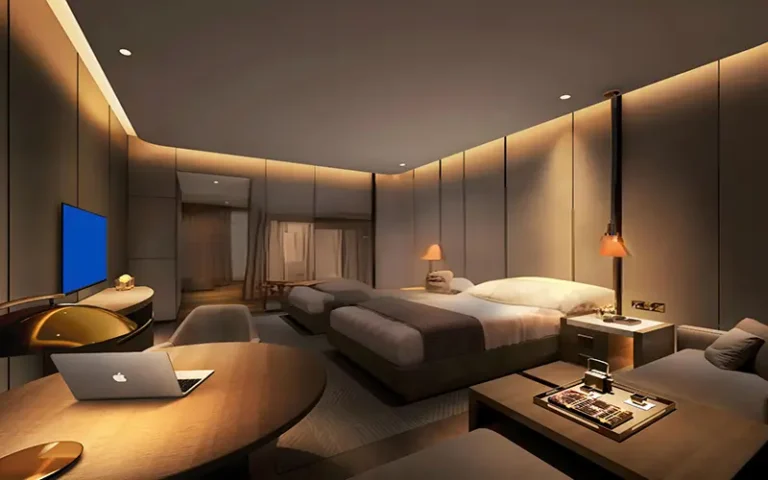Direção da luz das luminárias: Um guia completo
A luz é um elemento essencial nas nossas vidas e está intimamente relacionada com as nossas vidas. No entanto, a direção da luz, especialmente das luminárias, pode afetar significativamente a disposição, a funcionalidade e a estética de um espaço. Neste guia completo, vamos aprofundar os meandros da direção da luz das luminárias, explorando os seus tipos, importância e aplicações.
Compreender os princípios básicos das luminárias Direção da luz
A direção da luz refere-se ao caminho ou direção da luz emitida por um dispositivo de iluminação. Isto é determinado pelo design e construção da própria luminária, bem como pela colocação da fonte de luz dentro dela. A direção da luz afecta a forma como a luz interage com as superfícies, acentua determinadas caraterísticas e cria sombras.
No design de iluminação, tanto os designers como os consumidores precisam de compreender os fundamentos gerais da direção da luz. Isto permite a seleção adequada dos tipos de luminárias e da sua colocação.
Conseguir a direção certa é fundamental para criar o ambiente e a funcionalidade desejados num espaço. Uma luz corretamente direcionada pode melhorar a estética, aumentar a produtividade e até ter impacto na eficiência energética.
Tipos de direção da luz em luminárias Luz
Os aparelhos de iluminação e as luminárias oferecem vários tipos de direção da luz, desde para cima até para baixo. Cada direção da luz tem caraterísticas e aplicações diferentes:
- Luminária embutida: Um padrão de luz comum utilizado na iluminação de tarefas e de ambiente. O Downlight ilumina a superfície por baixo da luminária e é ótimo para tarefas específicas ou iluminação geral de espaços maiores.
- Luz ascendente: Os candeeiros, normalmente arandelas de parede e iluminação decorativa, têm esta direção de luz. A luz é reflectida no teto, criando um brilho mais suave e difuso que melhora a iluminação ambiente.
- Luz omnidirecional: A luz omnidirecional é comummente encontrada em luminárias com lâmpadas expostas ou com tonalidades claras. Difunde-se em todas as direcções, proporcionando uma iluminação uniforme a todas as partes de um espaço.
- Luz focada: Frequentemente utilizada para iluminação de tarefas, como candeeiros de leitura e projectores. A luz focada fornece um feixe de luz estreito e concentrado dirigido a uma área específica.
- Luz ajustável: As luzes reguláveis ou multidireccionais permitem ao utilizador alterar a direção da luz das luminárias conforme necessário. Proporciona uma iluminação versátil que pode ser personalizada de acordo com as necessidades em constante mudança.
A importância da direção da luz das luminárias
A direção da luz das luminárias desempenha um papel fundamental no design das lâmpadas e da iluminação. Uma iluminação corretamente direcionada aumenta a visibilidade, reduz a fadiga ocular e realça as caraterísticas ou pontos focais desejados.
Por exemplo, a iluminação descendente é frequentemente utilizada em cozinhas e escritórios para proporcionar uma iluminação clara para o trabalho. Entretanto, a iluminação ascendente é popular em espaços que requerem ambiente e uma atmosfera relaxante, como salas de estar ou salas de jantar.
Para além da funcionalidade, a direção da luz também afecta a eficiência energética. Por exemplo, se a luz estiver direcionada na direção errada ou for demasiado difusa, poderá necessitar de lâmpadas adicionais para cobrir áreas escuras, o que aumenta o consumo de energia. Com a direção correta, é possível obter uma luminosidade óptima com menos recursos.
Iluminação direcional vs. iluminação ambiente
Iluminação direcionalA iluminação direcional centra-se na iluminação de áreas ou objectos específicos e é frequentemente utilizada para chamar a atenção para determinados aspectos de um espaço. Os exemplos incluem obras de arte, bancadas ou áreas de leitura numa casa. Este tipo de iluminação utiliza frequentemente aparelhos com distribuições de feixe estreitas, como projectores ou luzes de trabalho.
Iluminação ambienteA iluminação ambiente é concebida para proporcionar uma iluminação geralmente uniforme numa divisão. A iluminação ambiente é ideal para espaços onde é importante criar um ambiente relaxante e acolhedor. Normalmente, é mais suave e difusa, criando uma atmosfera equilibrada e confortável.
A escolha entre iluminação direcional e iluminação ambiente depende muitas vezes do objetivo da divisão. Ambas podem ser utilizadas na iluminação interior. Uma combinação equilibrada das duas é frequentemente a melhor forma de criar um plano de iluminação em camadas e versátil que sirva objectivos práticos e estéticos.
Escolher a direção de luz correta para diferentes espaços
Quando se escolhe a direção de iluminação adequada a cada espaço. O objetivo da divisão deve ser considerado, bem como a atmosfera desejada e as necessidades específicas de iluminação. As diferentes divisões têm funções únicas e a direção da luz pode afetar significativamente o ambiente e a utilização dessas áreas. Sobre candeeiros de interior, por favor, verifique Iluminação de interiores: O que considerar ao escolher as lâmpadas
Por exemplo, existem algumas diferenças nas direcções da iluminação residencial e da iluminação de escritórios. O principal é encontrar um ponto em comum, resultando numa iluminação equilibrada, confortável e visualmente apelativa.
Salas de estar
a sala de estar, vários ângulos de iluminação misturar-se-ão. O principal objetivo da iluminação é tentar obter uma combinação de iluminação ascendente e omnidirecional para criar uma atmosfera acolhedora e convidativa.
A iluminação ascendente, como os arandelas de parede, reflecte a luz para o teto, criando um brilho suave e difuso que melhora o relaxamento. Existem também projectores. Para actividades como ler ou jogar, utilize a iluminação de realce ajustável para adicionar uma iluminação focada. Além disso, existem Fitas de luz LED instalados no teto para iluminação ambiente, etc., conferindo profundidade e caraterísticas à divisão.

Cozinhas
As cozinhas necessitam de uma iluminação ampla e orientada para as tarefas, de modo a garantir segurança e clareza na preparação dos alimentos e na confeção dos alimentos. A iluminação descendente por cima de bancadas, ilhas e fogões proporciona uma iluminação direcionada diretamente para onde é necessária.
As luzes de painel de teto embutidas e as luzes pendentes são excelentes opções porque ajudam a reduzir as sombras que podem dificultar as tarefas.
Iluminação sob o armário Tiras de LED são um complemento valioso, proporcionando iluminação direcional nas bancadas e melhorando a visibilidade ao preparar alimentos, cortar legumes e limpar.
Quartos de dormir
Sendo um local para relaxar e dormir, os quartos beneficiam mais de uma mistura de iluminação ambiente e de iluminação de trabalho para criar um ambiente versátil. A iluminação em camadas permite um controlo fácil dos níveis de brilho para corresponder a diferentes estados de espírito ou hábitos.
A iluminação ascendente, como candeeiros de pé ou luminárias de parede, cria uma atmosfera suave e relaxante para descontrair.
Para tarefas específicas, como ler na cama ou vestir-se, a iluminação direcional, como candeeiros de mesa de cabeceira ou candeeiros de parede ajustáveis, permite-lhe concentrar-se sem perturbar os outros na divisão.
Casas de banho
As casas de banho requerem uma iluminação prática e clara. Para garantir uma visibilidade segura e precisa, nomeadamente em torno do toucador.
A iluminação direcionada para baixo ou para cima do espelho fornece luz direta, o que é ideal para tarefas de cuidados pessoais, como fazer a barba ou aplicar maquilhagem. Outra opção é instalar tiras de luz LED à volta do espelho do toucador, o que tem um efeito de iluminação, permitindo-nos ver mais claramente.
A iluminação em camadas com candeeiros de ambiente suaves, como candeeiros de parede ou candeeiros de teto embutidos, ajuda a equilibrar o brilho, a reduzir as sombras fortes e a criar uma atmosfera acolhedora.
Escritórios
Os escritórios em casa e os espaços de trabalho requerem uma iluminação que ajude à concentração e minimize a tensão ocular. Isto é especialmente verdadeiro quando se está sentado à secretária durante longos períodos de tempo e cria um ambiente de iluminação confortável e equilibrado.
A iluminação direcional, como os candeeiros de secretária, proporciona uma iluminação focada nas superfícies de trabalho, evitando o encandeamento do ecrã e aumentando a produtividade. A iluminação ambiente em camadas ajuda a suavizar o espaço, reduzindo o contraste entre as luzes de trabalho brilhantes e as áreas mais escuras da divisão.
Luminárias ajustáveis Luz: Direção de luz flexível
Os candeeiros ajustáveis são uma escolha versátil que permite aos utilizadores alterar a direção da luz com base em necessidades ou preferências específicas. Estes candeeiros são ideais para espaços que servem múltiplos propósitos ou para utilizadores que pretendem controlar as suas definições de iluminação.
Por exemplo, as luzes de calha ajustáveis numa sala de estar podem ser reposicionadas para realçar obras de arte, acentuar a decoração ou fornecer iluminação de trabalho quando necessário. Da mesma forma, os candeeiros de mesa ajustáveis permitem aos utilizadores mover a luz exatamente para onde precisam, reduzindo o stress e melhorando a concentração.
Por isso, ao escolher a direção da luz de uma lâmpada, não se limite a apenas uma. Escolha um candeeiro que possa suportar vários métodos de regulação da intensidade da luz. Esta flexibilidade faz das lâmpadas ajustáveis uma óptima escolha para espaços multifuncionais e ambientes dinâmicos.
O papel do ângulo do feixe na direção da luz
Para a direção da luz das luminárias, ainda precisamos de prestar atenção à solução do feixe. O ângulo do feixe de uma lâmpada é o ângulo em que a luz é emitida pela fonte de luz. Este ângulo determina a propagação da luz numa direção específica e afecta a intensidade e a cobertura da iluminação.
- Ângulos de feixe estreitos (10-25°): Frequentemente utilizados para iluminação de realce ou de tarefas, estes ângulos proporcionam uma luz intensa e focada, perfeita para realçar as caraterísticas de um objeto.
- Ângulos de feixe médios (25-60°): Estes ângulos de feixe são versáteis e adequados para a iluminação geral, proporcionando uma cobertura adequada sem brilho excessivo.
- Ângulos de feixe largos (60° e superiores): Ideais para a iluminação ambiente, estes ângulos emitem uma luz difusa, garantindo uma iluminação mais suave e uniforme numa área maior.
A escolha do ângulo de feixe correto é crucial para obter o efeito desejado em cada área. Por isso, é necessário compreender antecipadamente a direção da luz emitida pela lâmpada e o significado do ângulo do feixe.
Problemas comuns com a direção da luz e como evitá-los
A escolha errada da direção da luz e do ângulo do feixe pode resultar numa instalação desconfortável ou ineficaz. Aqui estão alguns problemas e soluções para o ajudar a começar.
- Utilização excessiva de iluminação embutida: As luzes embutidas são práticas e populares. Mas a utilização excessiva de luzes embutidas pode tornar um espaço duro ou aborrecido. A incorporação de iluminação ambiente ou de iluminação superior pode acrescentar suavidade.
- Ignorar as sombras: Nos espaços de trabalho, uma iluminação mal direcionada pode projetar sombras fortes. Por isso, posicione as luzes de forma a minimizar as sombras indesejadas.
- Demasiado brilho: A luz direta demasiado intensa pode causar encandeamento. Utilize tiras de LED para iluminação ambiente. Recomendamos a sua utilização com perfis LED. Utilize difusores para uma iluminação consistente e uniforme.
- Camadas insuficientes: Depender de uma única direção de luz pode resultar em áreas pouco iluminadas. Utilize várias luzes emissoras em conjunto. Equilibre a iluminação direcional, ambiente e de realce para uma iluminação abrangente.
Conclusão
Ao compreender os princípios da direção da luz das luminárias, pode ajudá-lo a escolher a luminária certa para brilhar. Experimente diferentes técnicas de iluminação, a direção certa da luz pode fazer uma grande diferença.
Em ESSENLED, o nosso objetivo é fornecer Fita de iluminação LED de alta qualidade soluções que satisfazem todas as suas preferências de design, com opções personalizáveis e uma garantia de 5 anos. A nossa experiência em tecnologia LED permite-nos fabricar luminárias que respondem a diferentes necessidades diretas.

